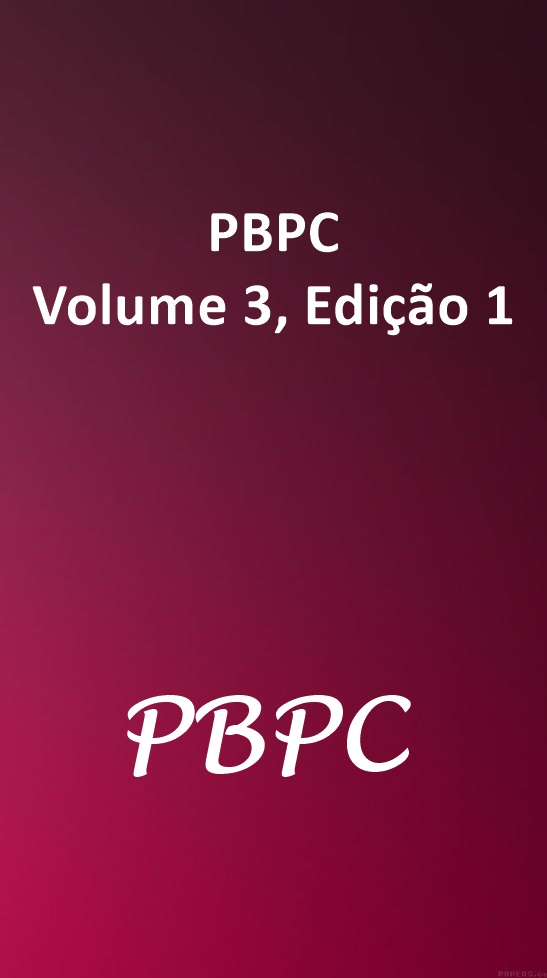DESENVOLVIMENTO DIAGNÓSTICO NO RASTREAMENTO DA PRÉ-ECLÂMPSIA
DOI:
https://doi.org/10.36557/pbpc.v3i1.34Keywords:
Early Diagnosis, Tracking Programs, Pregnant Women, Pre-EclampsiaAbstract
Pre-eclampsia is a hypertensive disorder during the pregnancy-puerperal cycle, characterized as pregnancy toxemia and a multisystem disease. It typically occurs in the advanced stages of pregnancy and presents arterial hypertension, proteinuria and edema as its main characteristics. In severe cases, it can progress to eclampsia, with the development of seizures due to impairment of the central nervous system. Therefore, the objective of the study is to identify the diagnostic development in pre-eclampsia screening. The present study is an integrative literature review, carried out according to the following steps: 1) elaboration of the research question; 2) bibliographic survey; 3) data evaluation; 4) data analysis – division, exposure and comparison; 5) presentation of results. A survey was carried out through the electronic library through the Virtual Health Library (VHL), selecting the following databases: Latin American and Caribbean Literature in Health Sciences and Medical Literature Analysis and Retrieval System Online. With this, the descriptors consulted in the Descriptors in Science and Health were used, being: “Early Diagnosis”, “Pre-Eclampsia” and “Tracking Programs”, using the Boolean operator AND between the descriptors when combined, with the descriptors in English so that there would be a greater number of studies. They received a quantity: MEDLINE (26) and LILACS (2). As organizations and providers incorporate new guidelines into obstetric care, the categorization of hypertension in pregnancy may similarly change over time. It is likely that providers' diagnosis of hypertension during pregnancy did not reflect all of the most recent guidelines. This may result in fewer cases of hypertension during pregnancy compared with updated diagnostic guidelines, although it is unlikely that we missed the most serious cases. The evolution of diagnostic methods for screening pre-eclampsia has proven fundamental in improving obstetric care. The incorporation of more comprehensive and specific criteria, such as the consideration of liver and kidney functional changes, in addition to hypertension and thrombocytopenia, reflects a significant advance in the early detection and management of this condition.
Downloads
References
FIGUEIRA, Sarah Franco et al. Economic evaluation of sFIt-1/PIGF ratio test in pre-eclampsia prediction and diagnosis in two Brazilian hospitals. Pregnancy hypertens, v. 13, p. 30-36, 2018. Disponível em: https://pubmed.ncbi.nlm.nih.gov/30177068/
KACZYNSKA, Katarzyna Kosinska et al. How to identify pregnant women at risk of pre-eclampsia? – a review of the current literature. Ginekol Pol., v. 89, n. 6, p. 335-338, 2018. Disponível em: https://pubmed.ncbi.nlm.nih.gov/30010183/
GOLDHARDT, Candice et al. Marcadores ultrassonográficos e bioquímicos na detecção precoce da pré-eclâmpsia. EURP, v. 2, n. 2, p. 60-64, 2010. Disponível em: 10.4281/eurp.2010.02.03
COSTA, Fabrício da Silva et al. Early screening for preeclampsia. Revista Brasileira Ginecologia e Obstetricia, v. 33, n. 11, p. 367-375, 2011. Disponível em: https://www.scielo.br/j/rbgo/a/RpFh69D4b56mQhqHsRFt7kQ/abstract/?lang=pt
CARVALHO, Carolina de Castro et al. A ultrassonografia doppler no rastreio da pré-eclâmpsia: uma revisão bibliográfica. SEMPESq - Semana De Pesquisa Da Unit - Alagoas, 2020. Disponível em: https://eventos.set.edu.br/al_sempesq/article/view/11198
PRATA, Luiz Felipe da Cunha et al. O papel do doppler de artérias uterinas no rastreamento da pré-eclâmpsia. Brazilian Journal of Health Review, v. 5, n. 6, 2022. Disponível em: https://ojs.brazilianjournals.com.br/ojs/index.php/BJHR/article/view/54124
WHITTERMORE, Robin et al.The integrative review: updated methodology. Journal of advanced nursing, v. 52, n. 5, p. 546-553, 2005. Disponível em: https://pubmed.ncbi.nlm.nih.gov/16268861/
URREA, Luz Adriana Meneses et al. Sinais de vida na morbidade da gestante. Doente global, v. 20, n. 61, 2021. Disponível em: https://scielo.isciii.es/scielo.php?script=sci_arttext&pid=S1695-61412021000100014&lng=es&nrm=iso&tlng=es
NOBLES, Carrie et al. Preconception blood pressure and its change into early pregnancy: early risk factors for preeclampsia and gestational hypertension. Hypertension, v. 76, n. 3, p. 922-929, 2020. Disponível em: https://www.ncbi.nlm.nih.gov/pmc/articles/PMC7456510/
LOURENÇO, Inês et al. Triagem para pré-eclâmpsia no primeiro trimestre e profilaxia com aspirina: nosso primeiro ano. Revista Brasileira de Ginecologista e Obstetrícia, v. 42, n. 7, 2020. Disponível em: https://www.scielo.br/j/rbgo/a/pqXSmpLBk4MwffGdy4TkW3h/?lang=en#
ATALLAH, Anthony et al. Aspirina e pré-eclâmpsia. La presse médicale, v. 48, n. 1, p. 34-45, 2019. Disponível em: https://www.sciencedirect.com/science/article/abs/pii/S0755498218304809?via%3Dihub
Downloads
Published
How to Cite
Issue
Section
License
Copyright (c) 2024 Maria Eduarda Wanderley de Barros Silva, José Felipe da Silva Ferreira, Amanda Hatsue Santana Endo, Suzane Belém Sampaio, Raissa Margarida de Araújo Pessoa, Clara Maria Pinto Tenório, Ana Hiasmyne Belém de Lucena Gomes, Lílian Vellozo Cavalcanti de Arruda, Ricardo Cavalcanti de Arruda Filho, Renata Drielle Oliveira, Vitoria Maria de Arruda Passos, Diego Barreto Simões, Camila Lira da Silva, Pedro Isaque Inácio dos Santos

This work is licensed under a Creative Commons Attribution 4.0 International License.
Você tem o direito de:
- Compartilhar — copiar e redistribuir o material em qualquer suporte ou formato para qualquer fim, mesmo que comercial.
- Adaptar — remixar, transformar, e criar a partir do material para qualquer fim, mesmo que comercial.
- O licenciante não pode revogar estes direitos desde que você respeite os termos da licença.
De acordo com os termos seguintes:
- Atribuição — Você deve dar o crédito apropriado , prover um link para a licença e indicar se mudanças foram feitas . Você deve fazê-lo em qualquer circunstância razoável, mas de nenhuma maneira que sugira que o licenciante apoia você ou o seu uso.
- Sem restrições adicionais — Você não pode aplicar termos jurídicos ou medidas de caráter tecnológico que restrinjam legalmente outros de fazerem algo que a licença permita.

